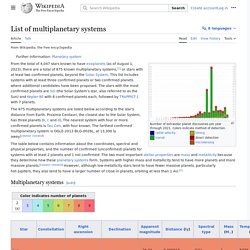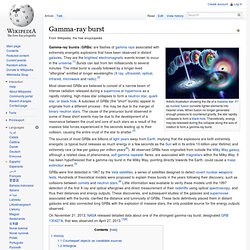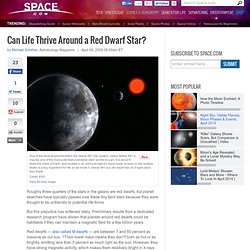

Contra timp - Română-Engleză Dicţionar - Glosbe. Giant planet. The Solar System's four giant planets against the Sun, to scale Relative masses of the giant planets of the Solar System The defining differences between a very low-mass brown dwarf and a gas giant (~13 MJ) are debated.[3] One school of thought is based on formation; the other, on the physics of the interior.[3] Part of the debate concerns whether "brown dwarfs" must, by definition, have experienced nuclear fusion at some point in their history.

Terminology[edit] Projecting Space Battle Physics. When I wrote my original article on the physics of space battles, and the accompanying short story, I made the creative decision to speculate on how space battle technologies and tactics would play out if we built from the present day – or, at least, the very near future.

The obvious thing to look at next is what a more distant future might hold – so, I’ll embrace my status as That Space Battle Physics Guy! A possible near-future space fighter radiating excess heat between battles I think that extrapolating or projecting space battle technologies forward in time is a difficult thing to do, even for the cleverest science fiction geeks.
How to self-publish an ebook. A while back I wrote a column titled "Self-publishing: 25 things you need to know," which was mostly about how to create and sell your own paper book.

After folks asked me to do something similar for e-books, I created this article, which has now been updated a few times. Amazon Kindle Direct Publishing: Get help with self-publishing your book to Amazon's Kindle Store. Kindle Direct Publishing (KDP) helps you publish your book directly to Kindle devices and apps.

With KDP, you can convert your book to an eBook and sell it on the Amazon Kindle Store. Step 1: Prepare Prepare your manuscript in Microsoft Word or a similar program. KDP supports many formats, but these produce the most consistent results when converted for reading on Kindle devices and apps:Word (DOC / DOCX)HTMLMobiePub. HD 69830. List of multiplanetary systems. Number of extrasolar planet discoveries per year through September 2014.

Colors indicate method of detection. From the total of 2,635 stars known to have exoplanets (as of September 1, 2016), there are a total of 595 known multiplanetary systems,[1] or stars with at least two confirmed planets, beyond the Solar System. About 280 of these have only two confirmed exoplanets, but some have a significantly larger number. Cosmic ray - Wikipedia. Cosmic flux versus particle energy Etymology[edit] The term ray is somewhat of a misnomer due to a historical accident, as cosmic rays were at first, and wrongly, thought to be mostly electromagnetic radiation.

In common scientific usage,[6] high-energy particles with intrinsic mass are known as "cosmic" rays, while photons, which are quanta of electromagnetic radiation (and so have no intrinsic mass) are known by their common names, such as gamma rays or X-rays, depending on their photon energy. Massive cosmic rays compared to photons[edit] In current usage, the term cosmic ray almost exclusively refers to massive particles - those that have rest mass - as opposed to photons which have no rest mass. Health threat from cosmic rays - Wikipedia. The HP threats from cosmic rays is the danger posed by galactic cosmic rays (GCR) and solar energetic particles to astronauts on interplanetary missions or any missions that venture through the Van-Allen Belts or outside the Earth's magnetosphere.[1][2] They are one of the greatest barriers standing in the way of plans for interplanetary travel by crewed spacecraft,[3][4][5] but space radiation health risks also occur for missions in low Earth orbit such as the International Space Station (ISS).[6] In October 2015, the NASA Office of Inspector General issued a health hazards report related to space exploration, including a human mission to Mars.[7][8] The deep-space radiation environment[edit] Sources of ionizing radiation in interplanetary space.

But of course the radiation belts are within Earth’s magnetosphere and do not occur in deep space, while organ dose equivalents on the International Space Station are dominated by GCR not trapped radiation. Human health effects[edit] Gamma-ray burst. Artist's illustration showing the life of a massive star as nuclear fusion converts lighter elements into heavier ones.

When fusion no longer generates enough pressure to counteract gravity, the star rapidly collapses to form a black hole. Theoretically, energy may be released during the collapse along the axis of rotation to form a gamma-ray burst. Gamma-ray bursts (GRBs) are flashes of gamma rays associated with extremely energetic explosions that have been observed in distant galaxies. They are the brightest electromagnetic events known to occur in the universe.[1] Bursts can last from ten milliseconds to several minutes. The initial burst is usually followed by a longer-lived "afterglow" emitted at longer wavelengths (X-ray, ultraviolet, optical, infrared, microwave and radio).[2] On November 21, 2013, NASA released detailed data about one of the strongest gamma-ray burst, designated GRB 130427A, that was observed on April 27, 2013.[7][8] History[edit] Afterglow[edit] Navy Deploying New Anti-Torpedo Technology - Defensetech.
The Navy is gearing up for deployment and a new round of tests of its Surface Ship Torpedo Defense System — a high tech system designed to protect aircraft carriers by locating, tracking and intercepting incoming torpedoes, Navy leaders said Oct. 24 at the Naval Submarine League, Falls Church, Va.

The upcoming tests, slated to take place on the USS George H.W. Can Life Thrive Around a Red Dwarf Star? Roughly three quarters of the stars in the galaxy are red dwarfs, but planet searches have typically passed over these tiny faint stars because they were thought to be unfriendly to potential life forms.

But this prejudice has softened lately. Preliminary results from a dedicated research program have shown that planets around red dwarfs could be habitable if they can maintain a magnetic field for a few billion years. Circumstellar habitable zone. "Goldilocks zone" redirects here. Magnetar: The most dangerous star in the Universe. Extended Range Guided Munition - Wikipedia. Despite the long development time the ERGM never worked as reliably as the older but significantly less expensive laser guided M712 Copperhead.
During development, the ERGM failed several tests in which the tail fins failed to deploy at launch, rocket motors did not ignite, or the electronic components did not survive the stress of being shot from a deck gun.[3] In February 2008, guidance components, rocket motors, and tail fins all failed in tests; Raytheon claimed they were testing specific functionalities rather than overall functionality and that they were "on the verge" of making the whole system operate reliably, but the Navy had lost confidence after years of issues and were no longer getting a return on investment. Torpedoes and the Next Generation of Undersea Weapons.